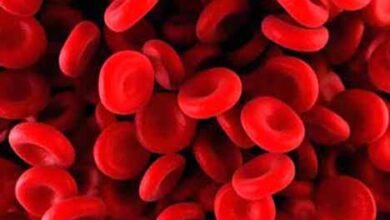
रसायन विज्ञान से संबंधित-126.
|
1. If a soluble substance is added to a liquid, then the surface tension of the liquid increases. 2. The number of protons present in the nucleus of an atom of any element is called the atomic number of that element. 3. The combined number of protons and neutrons present in the nucleus of an atom of any element is called the mass number of that element. 4. More heavy molecules have more number of protons than the number of neutrons. 5. Chloroform is left open in the atmosphere in the sunlight, it turns into the toxic gas phosgene (COCL2). 6. The process of converting atmospheric free nitrogen into nitrate is called nitrogen fixation. 7. Potassium chloride is most suitable for removing permanent hardness of water. 8. Gypsum is used to reduce the alkalinity in the soil. 9. The mixture used for soldering pieces of metals is a mixture of tin and lead. 10. To determine the age or age of archaeological remains or fossils, radio-activated carbon (C-14) is most commonly used. 11. Diamond has the highest refractive index and appears very bright due to total internal reflection. 12. Deuterium oxide i.e. heavy water (D2O) is colourless, odorless and tasteless. 13. Uranium 235 is more useful than uranium-238 for nuclear fission, because the nucleus of uranium-235 is relatively more temporary. 14. Platinus is the hardest metal while the nonmetal diamond is harder than all the materials in the world. 15. Picric acid is an organic compound, which is used as a reagent in laboratories. 16. On heating dry ice i.e. solid carbon dioxide, it directly converts into gas. 17. Theophestus mineral is used in the manufacture of talcum powder. 18. Phosphorescence: – Radiation continues to be emitted from some substances after placing them in sunlight and even after they are removed from the light. This phenomenon is called flutter like- calcium sulfide. 19. Fluorescence: – In some materials, by absorbing visible light, their electrons come to the excited state and after some time when the electrons come to the original state, radiations of different wavelengths are emitted. This process is called fluorescence. 20. Efflorescence: – Some salts have more crystallization water and when they are kept in air, the water evaporates from the crystal and the crystal turns into powder. This process is called effusion, such as Na2SO4.10H2O, Na,CO3.10H2O, CuSO4.5H2O, FeSO4.7H2O, ZnSO47H2O, MgSO4.7H2O, CaSO4.H2O etc. 21. Sublimation: – Sublimation is the process in which solid substances on heating turn into gaseous state without changing into liquid state and then on cooling change from gaseous state to solid state without changing to liquid state. Become. Purification of benzoic acid, anthracene, naphthalene, anthraquinone, camphor, ammonium chloride etc. is done by this method. 22. Isotopes: – Elements whose atomic number is same, but atomic weight is different, are called isotopes, e.g. Hydrogen has three isotopes- Protium (1H1) Deuterium (1H2) Tritium (1H3). 23. Isobar: – Atoms whose atomic numbers are different, but the atomic mass is the same, are called isobars. For example, argon (20Ar40), potassium (19K40) and calcium (18Ca40). 24. Activity series of Metals: – Such a general sequence of metals which are sorted on the basis of their decreasing reactivity is called Activity series. Metals above hydrogen in the reactivity series displace hydrogen from dilute acids and more reactive metals displace less reactive metals from their salt solutions. For example, potassium (K), sodium (Na), calcium (Ca), magnesium (Mg), aluminum (Al). 25. Corrosion: – When a metal surface is affected by water, air or any other nearby substance, then its metal is called corrosiveness and this phenomenon is called corrosion. For example, metals like gold (Au) and silver (Ag) do not corrosively, whereas metals like copper, iron corrosive easily. 26. Malleability: – Malleability refers to the property of metals under which they can be beaten into thin sheets. Metals exhibit the property of malleability. For example, gold and silver are the most malleable metals. 27. Ductility: – Tensile refers to the property of metals under which they can be converted into thin wire. Not all metals are equally ductile. Gold and silver are considered to be the most ductile metals. About 2 km long wire can be made from 01 gram of gold. 28. Galvanization: – By dipping iron in molten zinc, a layer of zinc is added to the iron. This process is called galvanization. The zinc layer covers the iron and does not allow it to come in contact with moist water, due to which the iron does not rust. For this reason, galvanization of iron is done. 29. Atomicity: – The number of atoms present in a molecule of an element is called atomicity. There are 08 atoms of sulfur in a molecule of sulfur, so its atomicity is 08. 30. Chemical Change: – The change which changes some specific properties of the substance by changing the composition of the molecule of the substance, is called chemical change. New molecules are formed as a result of a chemical change, or rather, a new substance is formed after a chemical change, whose properties are completely different from the original substance. The substance formed after chemical change cannot be converted back to the original substance, such as burning of magnesium wire, burning of candle, curdling of milk, rusting of iron, heating of iron-powder with sulphur, Hydrogen and oxygen are obtained by passing an electric current in water, burning of incense sticks. ========= ========= =========== 1. यदि किसी द्रव में घुलनशील पदार्थ मिलाया जाये, तो द्रव का पृष्ठ तनाव बढ़ जाता है. 2. किसी भी तत्व के परमाणु के नाभिक में उपस्थित प्रोटॉनों की संख्या, उस तत्व की परमाणु संख्या कहलाती है. 3. किसी भी तत्व के परमाणु के नाभिक में उपस्थित प्रोटॉनों और न्यूट्रानों की संयुक्त संख्या, उस तत्व की द्रव्यमान संख्या कहलाती है. 4. अधिक भारी अणुओं में न्यूट्रानों की संख्या की अपेक्षा प्रोटॉनों की संख्या अधिक होती है. 5. यदि क्लोरोफॉर्म को सूर्य के प्रकाश में वायुमण्डल में खुला छोड़ दिया जाए, तो वह विषैली गैस फॉस्जीन (COCL2) में बदल जाता है. 6. वायुमण्डलीय मुक्त नाइट्रोजन को नाइट्रेट में परिवर्तन करने की क्रिया नाइट्रोजन स्थिरीकरण कहलाती है. 7. पानी की स्थाई कठोरता दूर करने के लिए पोटेशियम क्लोराइड सर्वाधिक उपयुक्त होता है. 8. मिट्टी में क्षारकत्व को घटाने के लिए जिप्सम का प्रयोग किया जाता है. 9. धातुओं के टुकड़े को टांका लगने वाला मिश्रण, टीन और सीसा का मिश्रण होता है. 10. पुरातत्व अवशेषों अथवा जीवाश्मों की अथवा आयु निर्धारित करने के लिए, रेडियो-सक्रिय कार्बन (C-14) का उपयोग सबसे अधिक किया जाता है. 11. हीरे का अपवर्तनांक सबसे अधिक होता है और पूर्ण आतरिक परावर्तन के कारण वह अत्यधिक चमकीला दिखाई देता है. 12. डयुटेरियम ऑक्साइड अर्थात् भारी जल (D2O) रंगहीन, गंधहीन तथा स्वादहीन होता है. 13. नाभिकीय विखण्डन के लिए यूरेनियम-238 की तुलना में यूरेनियम 235 अधिक उपयोगी होता है, क्योंकि यूरेनियम-235 का नाभिक अपेक्षाकृत अधिक अस्थायी होता है. 14. प्लैटिनम सबसे कठोर धातु है जबकि अधातु हीरा, विश्व के सभी पदार्थों से अधिक कठोर है. 15. पिक्रिक ऐसिड एक कार्बनिक यौगिक है, जिसका उपयोग प्रयोगशालाओं में अभिकर्मक के रूप में किया जाता है. 16. शुष्क बर्फ अर्थात ठोस कार्बन डाइऑक्साइड को गरम करने पर वह सीधे गैस में परिवर्तित हो जाती है. 17. टेल्कम पाउडर के निर्माण में थियोफेस्टस खनिज का उपयोग किया जाता है. 18. स्फुरण (Phosphorescence): – कुछ पदार्थों को सूर्य के प्रकाश में रखने के बाद तथा प्रकाश से हटाये जाने के बाद भी उससे विकिरण उत्सर्जित होती रहती है. इस घटना को स्फुरण कहते हैं जैसे- कैल्सियम सल्फाइड. 19. प्रतिदीप्ति (Flourescence): – कुछ पदार्थों में दृश्य प्रकाश को अवशोषित करने से उनके इलेक्ट्रॉन उत्तेजित अवस्था में आ जाते हैं तथा कुछ समय पश्चात जब इलेक्टॉन मूल अवस्था में आते हैं, तो विभिन्न तरंगदैर्ध्य के विकिरण उत्सर्जित होते हैं. इस क्रिया को प्रतिदीप्ति कहते हैं. 20. उत्फुल्लन (Efflorescence): – कुछ लवणों में क्रिस्टलन जल अधिक होता है और जब इन्हें वायु में रख दिया जाता है, तो क्रिस्टल में से जलवाष्प बनकर उड़ जाता है और क्रिस्टल चूर्ण में परिणत हो जाता है. इसी क्रिया को उत्फुल्लन कहते हैं, जैसे- Na2SO4.10H2O, Naco3.10H2O, CuSO4.5H2O, FeSO4.7H2O, ZnSO47H2O, MgSO4.7H2O, CaSO4.H2O इत्यादि. 21. उर्ध्वपातन (sublimation): – उर्ध्वपातन वह क्रिया है, जिसमें ठोस पदार्थ गर्म किये जाने पर बिना द्रव अवस्था में बदले गैसीय अवस्था में परिणत हो जाते हैं और फिर ठंडा किये जाने पर गैसीय अवस्था से बिना द्रव अवस्था में बदले ठोस अवस्था में परिणत हो जाते हैं. बेंजोइक अम्ल, ऐन्थ्रासीन, नेप्थलीन, ऐन्थ्राक्वीनोन, कपूर, अमोनियम क्लोराइड इत्यादि का शुद्धीकरण इसी विधि द्वारा होता है. 22. समस्थानिक (isotopes): – वैसे तत्व जिनकी परमाणु संख्या समान, परन्तु परमाणु भार भिन्न-भिन्न होती है, समस्थानिक कहलाते हैं, जैसे- हाइड्रोजन के तीन समस्थानिक हैं- प्रोटियम (1H1) ड्यूटेरियम (1H2) ट्राइटियम (1H3). 23. समभारिक (Isobar): – ऐसे परमाणु जिनके परमाणु क्रमांक भिन्न-भिन्न होते हैं, परन्तु परमाणु द्रव्यमान समान होते हैं, समभारिक कहलाते है. जैसे – आर्गन (20Ar40) पोटैशियम (19K40) तथा कैल्सियम (18Ca40). 24. धातुओं की सक्रियता श्रेणी (Activity series of Metals): – धातुओं की एक ऐसी सामान्य क्रम सूची जो उनकी घटती हुई अभिक्रियाशीलताओं के आधार पर क्रमबद्धित होती है, सक्रियता श्रेणी (Activity series) कहलाती है. सक्रियता श्रेणी में हाइड्रोजन से ऊपर स्थित धातुएँ तनु अम्लों से हाइड्रोजन विस्थापित करती है और अधिक अभिक्रियाशील धातु कम अभिक्रियाशील धातु को उसके लवण विलयन से विस्थापित कर देती है.जैसे- पोटेशियम(k),सोडियम(Na), कैल्सियम( Ca), मैग्नीशियम(Mg), ऐलुमिनियम(Al). 25. संक्षारण (Corrosion): – धातु-सतह जब जल, वायु अथवा आस-पास के अन्य किसी पदार्थ से प्रभावित होती है, तो इसकी धातु का संक्षारित होना कहते हैं तथा इस परिघटना को संक्षारण कहते हैं. जैसे- सोना (Au) और चांदी (Ag) जैसी धातुएँ सगुगमतापूर्वक संक्षारित नहीं होती हैं, वहीं तांबा, लोहा जैसी धातुएँ आसानी से संक्षारित हो जाती हैं. 26. आघातवर्ध्यता (Maleability): – आघातवर्ध्यता से तात्पर्य धातुओं के उस गुणधर्म से है, जिसके अंतर्गत उन्हें पीट-पीट कर उनकी पतली चादरें बनायी जा सकती है. धातुएँ आघातवर्ध्यनीयता का गुण प्रदर्शित करते हैं.जैसे- सोना, और चांदी सर्वाधिक आघातवर्ध्यनीय धातुएँ होती हैं. 27. तन्यता (Ductility): – तन्यता से तांत्पर्य धातुओं के उस गुणधर्म से है, जिसके अंतर्गत उन्हें पतले तार में परिणत किया जा सकता है. सभी धातुएँ एक समान तन्य नहीं होती हैं. सोना और चांदी सर्वाधिक तन्य धातुएँ मानी जाती है. 01 ग्राम सोने से लगभग 02 कि०मी० लंबी तार बनायी जा सकती है. 28. जस्तीकरण (Galvanization): – लोहा को गलित जस्ता में डुबा देने से लोहा पर जस्ता की एक परत चढ़ जाती है. इस क्रिया को जस्तीकरण कहा जाता हैं. जस्ते की परत लोहे की ढंककर उसे नम जल के संपर्क में नहीं आने देती है, जिस कारण लोहे पर जंग नहीं लग पाता है. इसी कारण से लोहा का जस्तीकरण किया जाता है. 29. परमाणुकता (Atomicity): – किसी तत्व के एक अणु में उपस्थित परमाणुओं की संख्या को परमाणुकता कहते हैं. सल्फर के एक अणु में सल्फर के 08 परमाणु रहते हैं, अतः इसकी परमाणुकता 08 होती है. 30. रासायनिक परिवर्तन (Chemical Change): – वह परिवर्तन जो पदार्थ के अणु की रचना को बदलकर पदार्थ के कुछ विशिष्ट गुणों को बदल देता है, रासायनिक परिवर्तन कहलाता है. रासायनिक परिवर्तन के फलस्वरूप नए अणुओं की रचना होती है या यूँ कहें कि, रासायनिक परिवर्तन के पश्चात एक नया पदार्थ बनता है, जिसका गुणधर्म मूल पदार्थ से पूर्णतया भिन्न होता है. रासायनिक परिवर्तन के पश्चात बने पदार्थ को मूल पदार्थ में पुनः परिवर्तित नहीं किया जा सकता है, जैसे- मैग्नीशियम के तार का जलना, मोमबत्ती का जलना, दूध से दही बनना, लोहे में जंग लगना, लौह-चूर्ण को गंधक के साथ गर्म करना, जल में विद्युत धारा प्रवाहित करने पर हाइड्रोजन व ऑक्सीजन का प्राप्त होना, अगरबत्ती का जलना.
|





